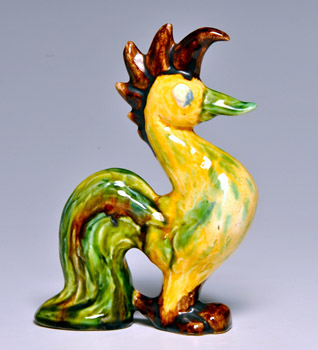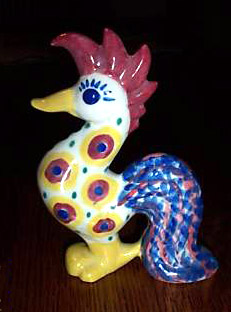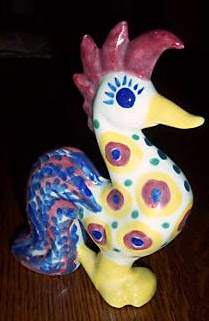
Rooster by Karl Martz, ca. 1938.
Photograph by Tracy Murray.
Slip Casting. The clay body of this piece was made by slip casting in a plaster mold. The plaster mold was cast around an original rooster sculpted by Karl. After removing the original, and drying the plaster, the hollow in the mold was filled with slip. Slip is liquid clay. The plaster mold (initially dry) pulls water out of the slip where it contacts the mold, forming a leathery skin. When the skin is thick enough, the remaining slip is poured out, leaving a hollow clay body in the hollow inside of the mold. After some further drying, the clay "skin" separates from the plaster mold, which is then removed leaving a hollow clay rooster, which is then completely dried. Glaze decorations are then applied by hand.
Each rooster had an identical body but individual variations in glazing. This piece is an example of a few low-volume production items that Karl made early in his career.
A similar rooster can be seen at the right end of the wide shelf in the Pink House Showroom.
 Another rooster by Karl Martz, ca. 1938, with different glazing.
Scratched on the bottom of this one is "6/50 K. MARTZ".
Another rooster by Karl Martz, ca. 1938, with different glazing.
Scratched on the bottom of this one is "6/50 K. MARTZ".


 Rooster by Karl Martz, ca. 1938.
Rooster by Karl Martz, ca. 1938.